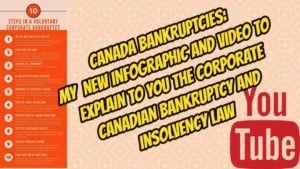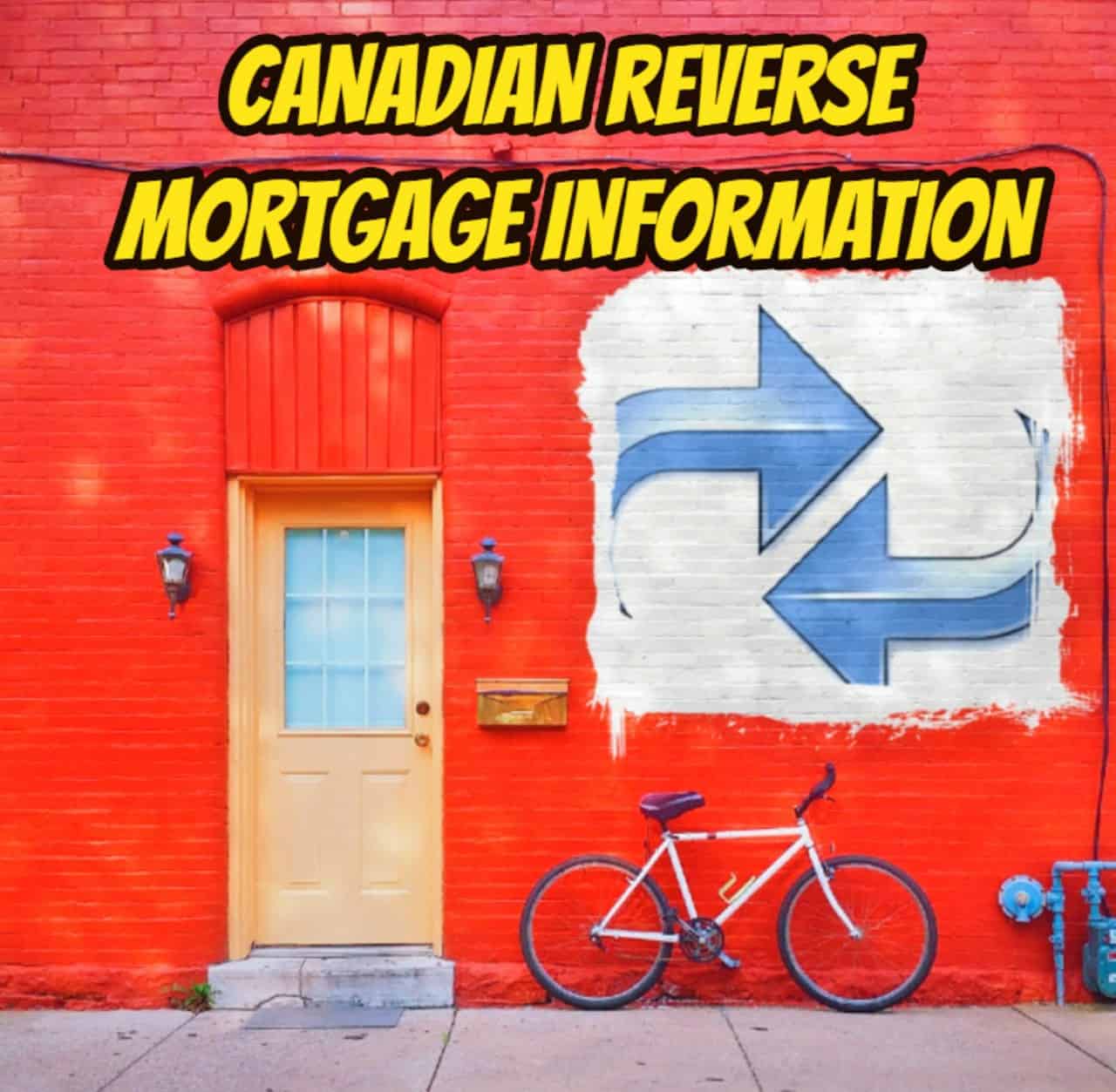Canada bankruptcies: Introduction
The purpose of this infographic, video and blog is to give you Canada bankruptcies information. I want to explain how Canadian bankruptcy and insolvency law works for companies and what the major steps corporate bankruptcy laws in Canada are. So watch the video below and feel free to read in more detail right below the video.
Canada bankruptcies: Video
Canada bankruptcies: The 10 standard steps in a voluntary corporate bankruptcy
The actions of a Licensed Insolvency Trustee (Trustee) takes with respect to the assets and the claims of creditors in a corporate bankruptcy may differ from case to case. However, there are 10 standard steps the Trustee takes in each corporate bankruptcy file. These steps are to understand and deal with the nature of the assets and the creditor claims.
Here are the 10 steps I take as a standard process with each corporate bankruptcy.
Step 1 – Initial meeting with Trustee
I meet with the Directors of the company by providing a free consultation. In this meeting, I learn the causes of the company’s insolvency and the nature and extent of the assets and the claims of various creditors. This includes potential trust claimants and secured creditors.
After obtaining the information I need to provide advice specific to that company’s situation, I decide if the company is a candidate for a restructuring, either informally or in a bankruptcy protection mode. If possible, this is preferable, as it will save jobs and allow the company to continue in business. If not, I advise about corporate bankruptcy and what is involved.
Step 2 – Directors meeting
If bankruptcy is the answer, the Directors formally meet and pass a resolution stating that the company is insolvent and must file an assignment in bankruptcy. The resolution also indicates which Director is authorized to sign all documents and be the Designated Officer in the bankruptcy proceedings. The Designated Officer is the person that will attend the First Meeting of Creditors and answer questions about the causes of the company’s insolvency and bankruptcy and how the company conducted business.
Step 3 – Signing all documents
With the signed Directors’ resolution in hand, I prepare all necessary bankruptcy documents. I then meet with the Designated Officer to explain the documents and have them all signed by him or her.
Step 4 – Filing with Official Receiver
The Official Receiver is the local representative and part of the Federal Office of the Superintendent of Bankruptcy. I electronically file the required documents and wait for the Official Receiver to issue the bankruptcy certificate. The company is not officially bankrupt until the day and time that the Official Receiver issues the bankruptcy certificate. Normally it gets issued on the same day or the next day. So, if the timing of the start of the bankruptcy is important, I need to take a time lag into consideration.
Step 5 – Bankruptcy certificate
The company is not officially bankrupt until the day and time that the Official Receiver issues the bankruptcy certificate. Normally the issuance is on the same day or the next day. So, if the timing of the start of the bankruptcy is important, I need to take a time lag into consideration.
Once the certificate is issued, my firm Ira Smith Trustee & Receiver Inc., is named as the Trustee. This appointment is valid until the First Meeting of Creditors. At the meeting, one of the things the creditors must vote on, is affirming the Trustee’s appointment.
Step 6 – Trustee takes possession
Now that I am the Trustee, I have a duty to take possession of the company’s books and records and the known assets. Taking possession of the assets is subject to the rights and wishes of any trust claimants or secured creditors.
Step 7 – Trustee notifies known creditors
Within 5 days of the date of bankruptcy, I must familiarize myself with the books and records as ot the names and addresses of the creditors. I must also in those same 5 days, set the time and place for the First Meeting of Creditors and mail out the notice to the creditors advising of the bankruptcy, the creditors meeting details and providing a proof of claim form. I must also arrange for a notice of the bankruptcy be placed in a local newspaper so that any unknown creditors are officially on notice.
Step 8 – Trustee safeguards assets
Again subject to the rights of any trust claimants or secured creditors, I must safeguard, insure and store the assets. I can begin formulating a plan for selling the assets if there is equity for the bankruptcy estate. However, I cannot sell any assets before the First Meeting of Creditors without a Court Order. At the creditors meeting is where I seek the approval of the creditors for the plan I have prepared to sell the assets. After obtaining that approval, sales can be completed by the Trustee.
Step 9 – Trustee prepares the report
I prepare my Trustee’s Report To The Creditors On Preliminary Administration. The report is handed out to the creditors present at the First Meeting of Creditors. It is also a public document, so any creditor who could not attend the meeting can receive a copy.
The report covers the following areas:
- Background information
- Causes of financial difficulty
- Description and estimated value of the company’s assets
- Any trust, secured or property claims against the assets
- What conservatory and protective measures to safeguard the assets the Trustee has taken to date
- Books and records of the company
- What the Trustee’s review to date of the books and records has determined, if anything
- Did the Trustee retain legal counsel yet and if so, for what reason? If there is a trust, secured or property claims that the Trustee knows about, it would be normal for the Trustee to get a legal opinion on the validity and extent of such claims prior to the creditors meeting. The Trustee would advise the creditors of what the legal opinion says and how it will affect the sale of assets, or if there is even anything for the Trustee to sell.
- The claims of the creditors identified to date.
- What the anticipated realization and distribution to the unsecured creditors may be
- The Trustee’s fee
- Any other matters
Step 10 – The First Meeting of Creditors
Within 21 days of the date of bankruptcy, I hold the creditors meeting. My report described above is distributed. The Trustee, the Designated Officer and possibly the lawyer hired by the Trustee, attend the creditors meeting. Also attending are any creditors who wish to take part.
The creditors meeting is the place where the creditors can ask questions and find out information about the causes of bankruptcy and the Trustee’s estimate of what the unsecured creditors may receive by way of a distribution.
As mentioned above, the creditors also must approve the actions and activities of the Trustee to date, and approve any steps the Trustee wishes to take in realizing upon assets and dealing with creditors’ claims. The creditors also appoint up to 5 Inspectors. The Inspectors are representatives of the creditors who supervise and assist the Trustee and ultimately must approve the Trustee’s actions.

These are the 10 standard steps I take in every voluntary corporate bankruptcy. The exact things I must do to realize upon the assets and deal with the claims of creditors will depend on the assets and claims themselves. When the bankruptcy administration is complete, including any distributions made, the Trustee then obtains a discharge.
Is your company experiencing financial difficulty?
I hope that you have found this information helpful. Bankruptcy is the last thing we try to do for a company in financial difficulty. If caught early enough, we can get involved in a turnaround situation for your company to keep jobs and value.
The Ira Smith Team knows that you are worried because your company is facing significant financial challenges. Your business provides income not only for your family. Many other families rely on you and your company for their well-being. The stress placed upon you due to your company’s financial challenges is enormous. We understand your pain points.
Contact the Ira Smith Team today. We know how to solve your company’s financial challenges, remove your pain and put things back on a healthy path. Contact us today for your free consultation so that we can save your company, Starting Over Starting Now.













